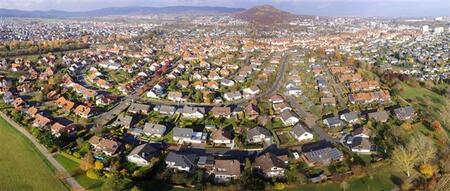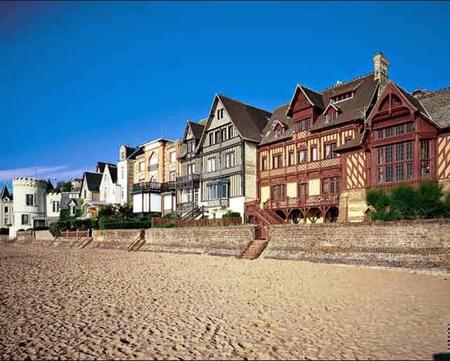Twin Towns

Vrchlabi actively cooperates with its partner towns, and often organises meetings with friends from Germany, France and Poland, communicates with them, together they develop joint projects and draw mutual inspiration, and Vrchlabi has been building long-term mutual partnership cooperation.
Baunatal

Baunatal is a very young town. It was established in 1966 when four neighbouring villages in the Bauna river valley in North Hessen were amalgamated. Three other villages joined them before 1972, building Baunatal’s population to 28 thousand. A brand new town centre with administrative buildings, sports premises, shopping centre, indoor pool and other facilities, all of this combined with the traditional buildings of the original villages, provide Baunatal’s inhabitants with a pleasant place to live and work.
The Volkswagen car factory is the big employer in the area, with a staff of approx. 15 thousand. The presence of Volkswagen in Baunatal and Skoda in Vrchlabi was probably the initial reason to establish a partnership between the towns. The first contact was made in 1989 when a group of sportspersons from the volleyball and karate clubs of the TJ Spartak Vrchlabi association took up an invitation from the KSV Baunatal. The official partnership agreement was signed on 22 June 1991 in Baunatal as part of the 25th anniversary of the town.
Over 20 years of regular exchanges, many sincere friendships between people of all ages have been built, from children to seniors, between the mayors and councillors of both towns, among sportspersons and people from various organisations. The average attendance on regular official visits is around 50 people or more. Every odd year visitors from Vrchlabi are accommodated by the families of their friends, and in even years visitors from Baunatal come to Vrchlabi. Besides these visits, many friends meet on a private basis several times a year and their friendships have become just like those of relatives, although Baunatal is over 600 km away.
Trouville sur Mer

Trouville sur Mer, located on the coast of Normandy approx. 25 km from Le Havre, has a population of some 6 thousand, which grows threefold in the summer season. Originally a fishing village discovered by the French painter Charles Mozin in the mid-19th century, it has become a much sought-after summer resort with a renowned beach, opulent hotels and guesthouses, a casino, a number of bars and restaurants. As a reminder of the times of its fishing glory, the town has preserved a poissonerie – a fish shop which is protected as part of the national heritage and where the local fishermen bring catches of fresh seafood twice a day.
Deauville, a younger twin-like town for Trouville, is separated by only a river, and are both among the most well-known summer resorts in France today. The first links with Vrchlabi were established in 1989 and the official partnership agreement was signed in September 1993.
There is a variety of activities on both sides, including exchanges of children, locals, tourists, civic associations and other organisations, the Vrchlabi Gymnasium (Grammar School) and Charles Mozin College being the most diligent ones. In the cultural sphere, several exhibitions have been held in both Vrchlabi and Trouville in cooperation between the local museums. The music schools in both towns have successfully organised exchanges which feature concerts. The councillors of both towns are also frequently in touch.
Despite the considerable distance of 1400 km and the initial language barrier, the cooperation is seen as rich, successful and truly informal. This is confirmed by the many newly established personal friendships and the unceasing interest in French classes at the Vrchlabi Gymnasium, as well as in Czech courses in Trouville.
Kowary

Kowary is located in the south-eastern part of the Zielenogorska basin in the foothills of the Krkonose and the Rudawy Janowickie on an intersection of historical trading paths. This area is suitable especially for family hikes in the summer and winter. You can find picturesque places and trails which will suit even the most demanding tourists. In just a few hours you can reach the highest peak of the Krkonose-Sudeten mountain system – Snezka, 1603 m a.s.l.
The town’s development has always been linked to the mining industry and smiths. According to folk legends, a Walloon miner, Laurentius Angelus, found iron ore on the slope of Rudnik hill. Shortly afterwards, the river Jedlice valley was full of kilns and smiths. On 4 September 1513 the Czech and Hungarian king Vladislaus II, also known as Ladislaus Jagiellon, granted Kowary town privileges. In the 16th century the town, together with Swidnica and Wroclaw, was the most important centre of iron production in Lower Silesia. Today Kowary, with its exceptionally attractive location, seeks to create the image of a spa town with traditions popular with visitors.
Kowary and Vrchlabi lie on two different sides of the Krkonose Mountains. They are of similar size and were founded at approximately the same time (Kowary in 1513, Vrchlabi in 1533). They are also linked by their mining history, industrial tradition and good opportunities for the development of tourism. The proximity of the towns, not just because of the distance of only 55 km, provides the best opportunities for further cooperation and the development of mutual relationships. The first document, a Memorandum of Friendship, Understanding and Cooperation, was signed on 9 August 2007.